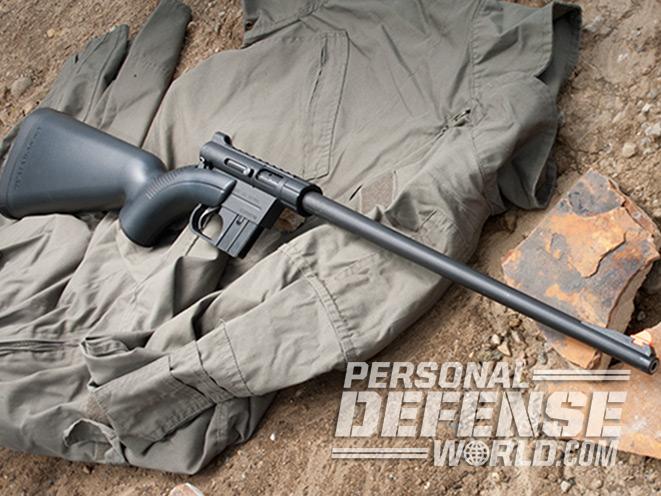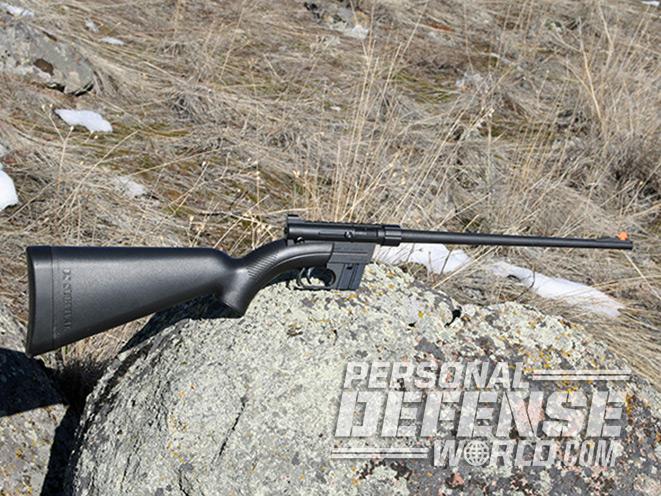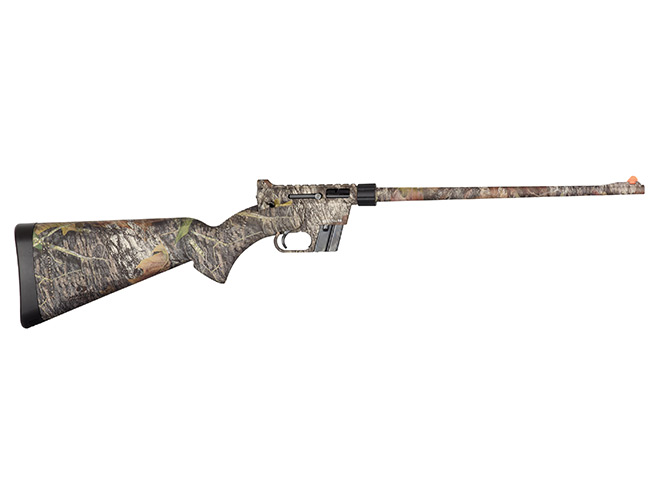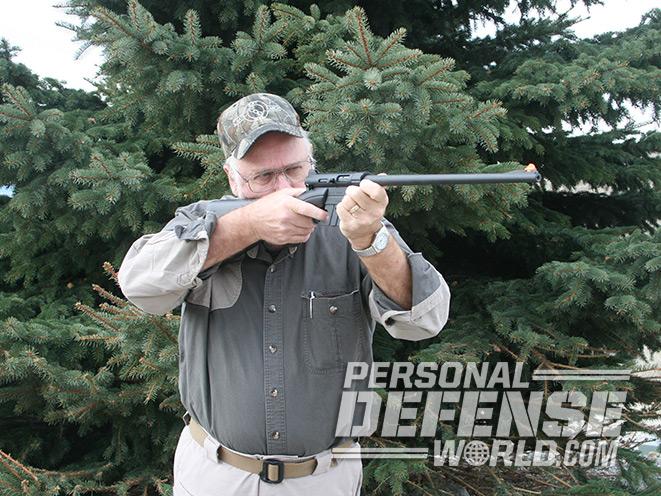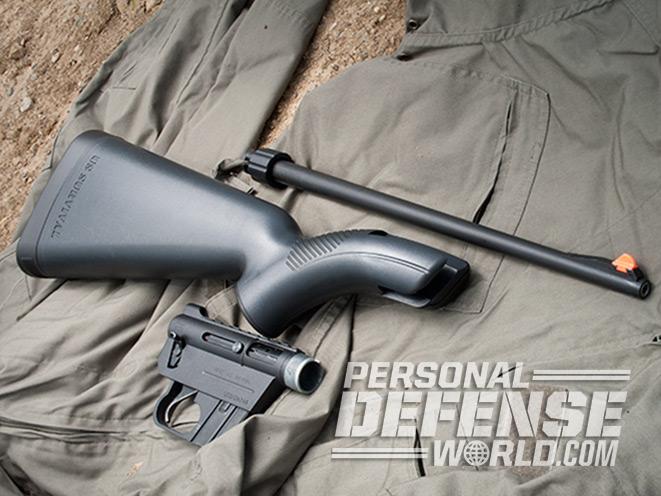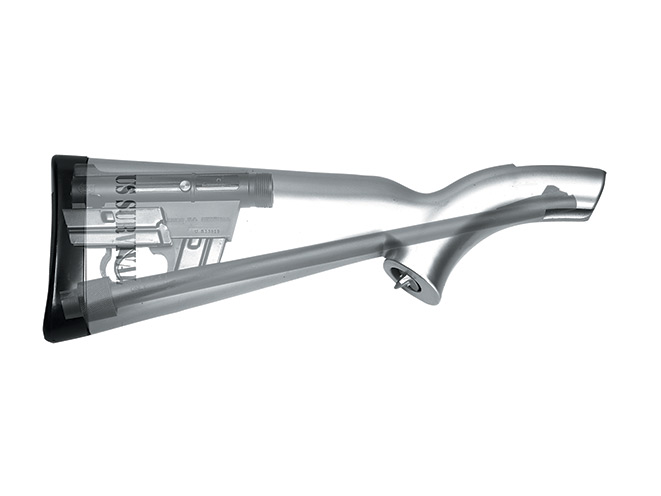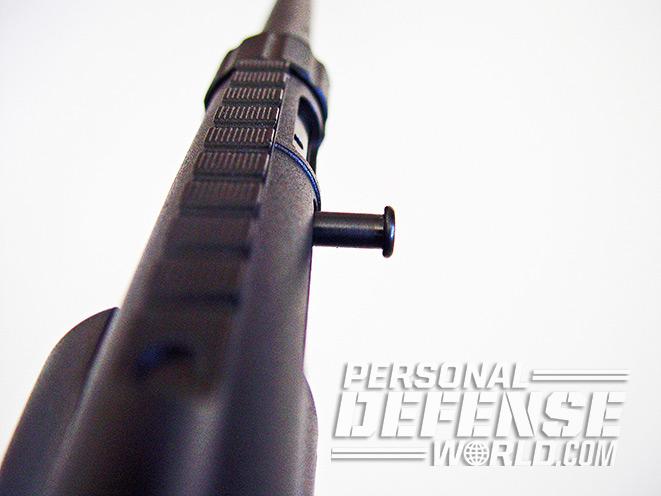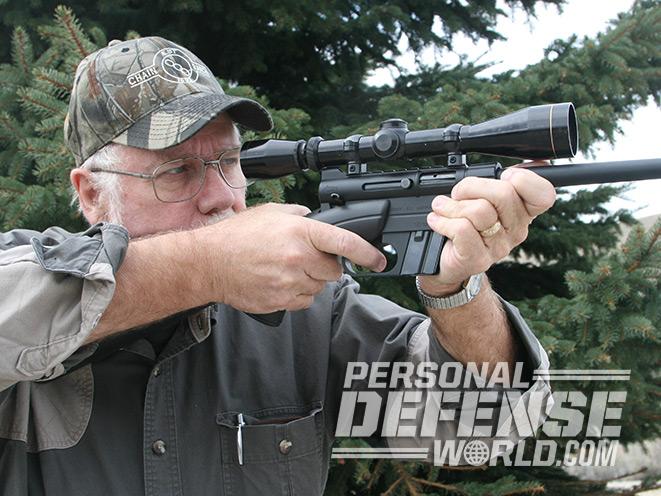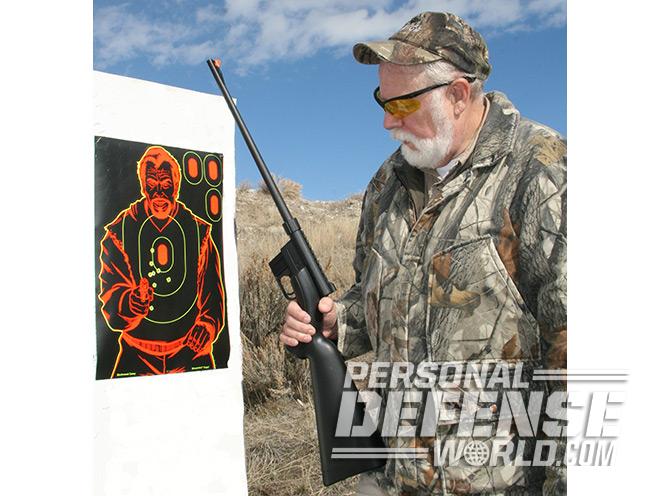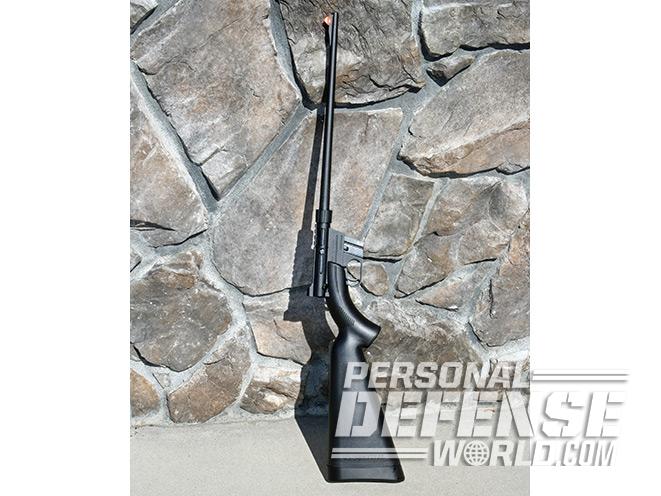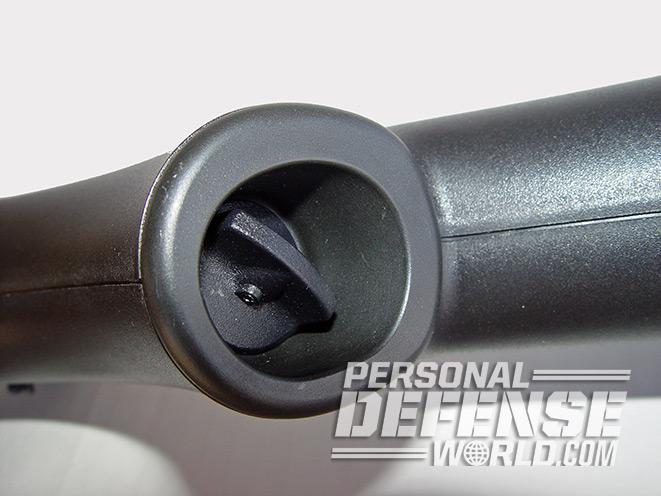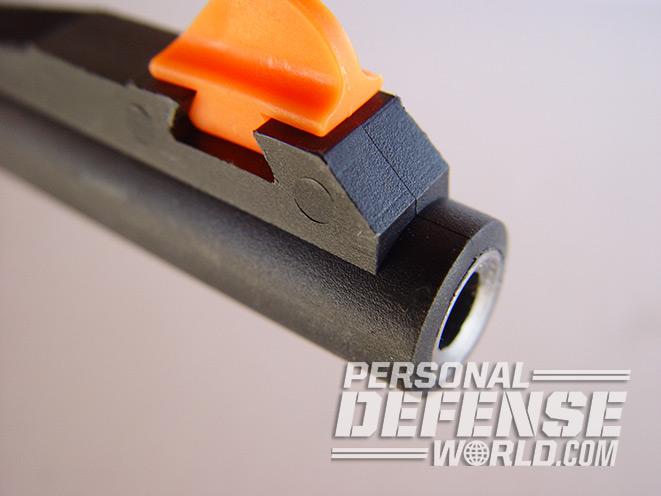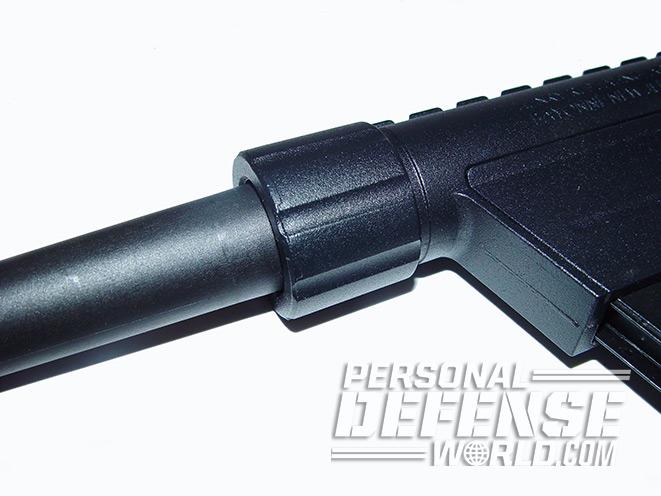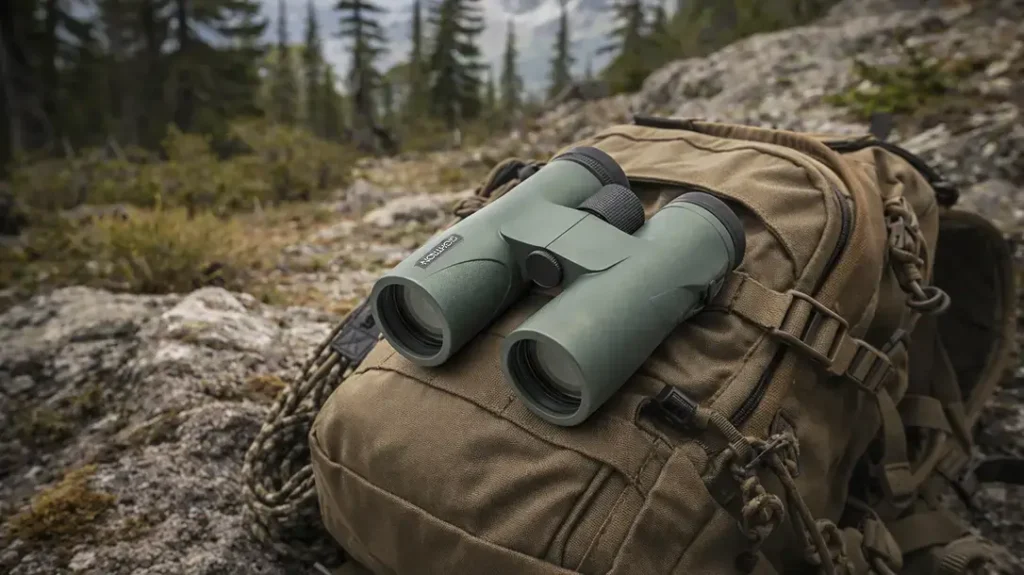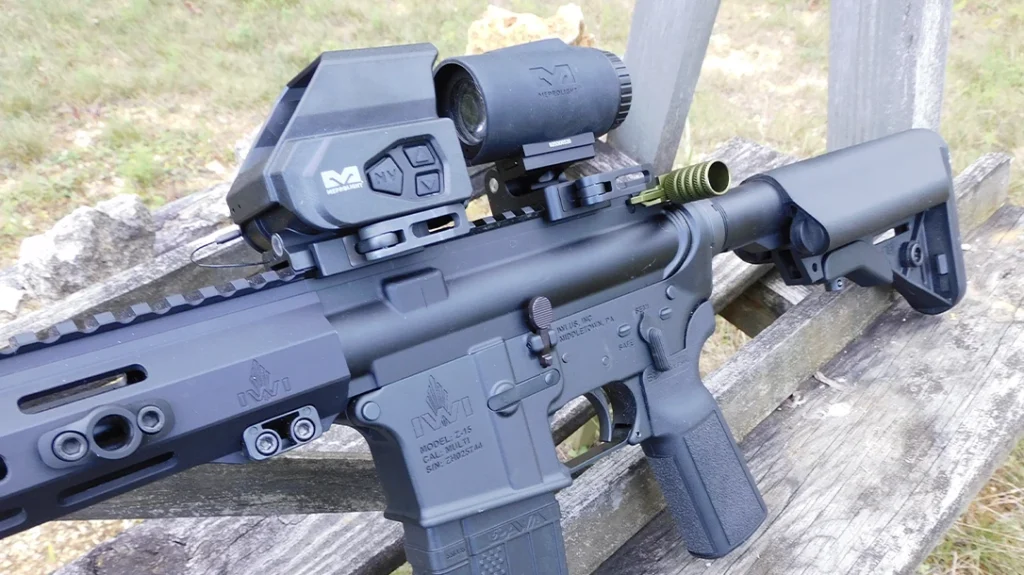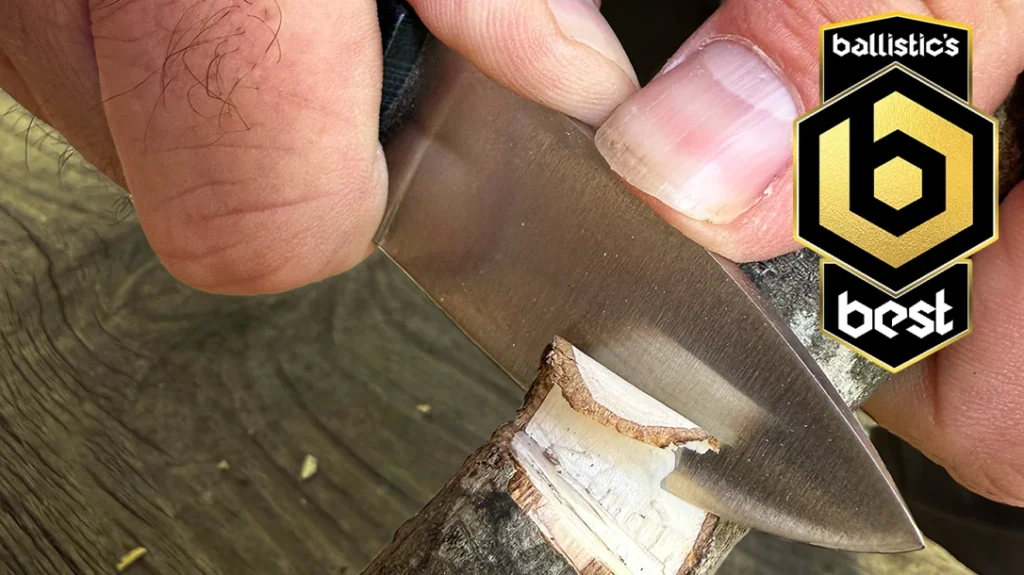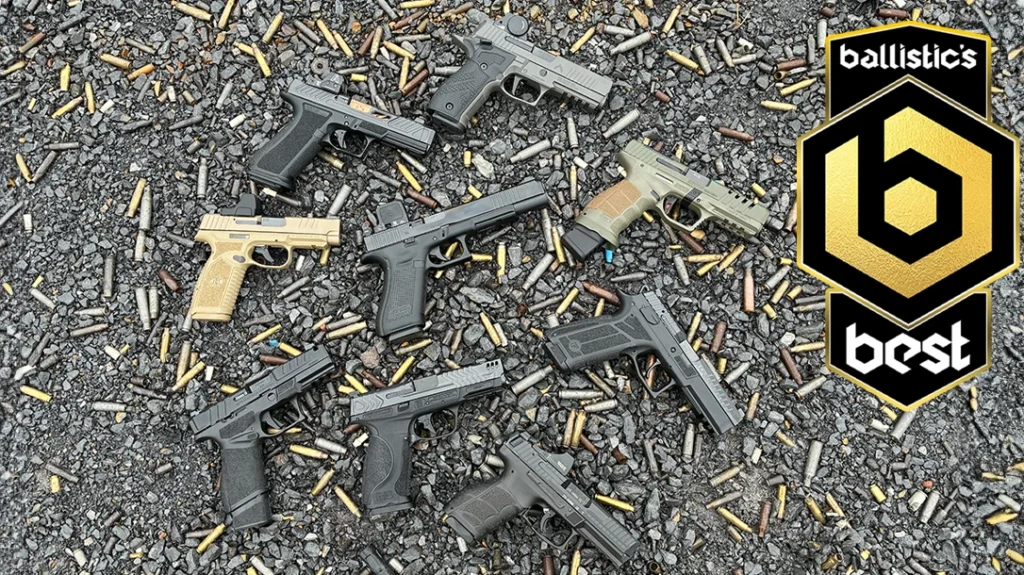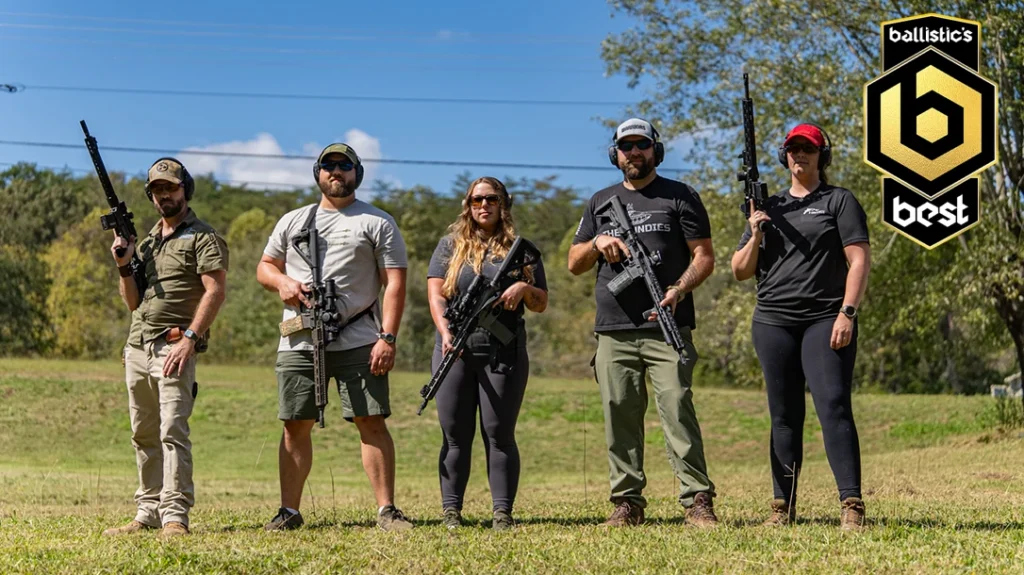Originally, the term “survival rifle” was given to those firearms that frequently accompanied military aircraft personnel and served a dual purpose. First and possibly foremost, they could be used as a defensive weapon against any enemy combatants that might be encountered. And second, they could be used as a means of obtaining food in the form of the native wildlife that might inhabit a particular area.
Survival firearms have been a large part of our U.S. military weaponry for decades. During World War II, the M4 Survival Rifle played an instrumental role in keeping our pilots and crew members safe and out of harm’s way. This particular weapon was a bolt-action design chambered in .22 Hornet. It was built on a sheet-metal frame and had a telescoping wire buttstock. Between the 1950s and the early 1970s, the M6 Scout played a similarly important role, but it was an over/under model designed to shoot .22 LR rounds and .410 shotshells.
In the mid-1950s, Armalite was commissioned to build a survival rifle for the U.S. Air Force that became known as the Armalite AR-5. Like the M4, this rifle was also a bolt-action design chambered in .22 Hornet. It was built to be compact, and through the use of lightweight plastics and aluminum alloys, Armalite was able to keep the weight down to a mere 2.5 pounds. But production of the AR-5 never really got off the ground. By all accounts, this was a fine rifle, and even though Armalite produced a dozen prototypes and submitted those to the U.S. Air Force for consideration, no production funding was ever made available for the project. At least part of the reason behind that lack of funding was due to the fact that a significant number of both the M4 Survival Rifle and M6 Scout models still remained in the military’s inventory.
Advertisement — Continue Reading Below
Even though all of these survival firearms were considered good emergency gear for the aircrews and for use in potential survival-type situations, there was another design that emerged and managed to survive the test of time for over six decades, and it still remains in production today. That rifle is the AR-7, or the U.S. Survival AR-7, which was designed and developed by Eugene Stoner of Armalite, a division of Fairchild Aircraft.
Compact Lifesaver

The Henry Repeating Arms Company’s U.S. Survival AR-7 shares some of the same characteristics of the prototype AR-5 rifle, but rather than being a bolt-action chambered in .17 Hornet, the AR-7 is a semi-automatic design chambered for the .22 LR. Two versions of this rifle are currently available on the civilian market from Henry, both of which are essentially identical with the exception of their coloration. The Model H002C is produced in a Mossy Oak camo pattern and the Model H002B comes in the more traditional black color. For a short period of time, Henry also produced a silver-colored model called the H002S, but that rifle is no longer available.
Advertisement — Continue Reading Below
RELATED STORY: 30 Semi-Auto Rifles For Home Defense & Urban Survival
Each of the Henry U.S. Survival AR-7s comes with three 8-round, detachable magazines. The sights consist of a simple and unpretentious peep sight in the rear and a plastic, bright fluorescent orange front blade at the muzzle. The very basic design of the rear sight consists essentially of a thin, stamped-out piece of metal that has a hole drilled in it. That plate is held in place with a single slot-headed screw that, when loosened, allows it to slip up or down in order to adjust the point of impact vertically. For horizontal sighting adjustments, the front sight can be drifted either to the right or left as needed.
The Henry U.S. Survival AR-7 comes with many unique and somewhat unusual characteristics and traits that combine to make this rifle a great choice as a tool for survival. Its 15.5-inch barrel has a steel-lined bore and comes coated with a thick and tough exterior coating of ABS plastic that then is further protected by a coat of Teflon. The receiver and other exterior metal have also been coated with Teflon, adding a considerable degree of protection against moisture damage and would likely also provide a considerable amount of protection against saltwater corrosion exposure.
Advertisement — Continue Reading Below
Easy Assembly

Much of the appeal of the AR-7 lies in its ability to be quickly and easily broken down, allowing the component parts, including the barrel, receiver and the magazines, to be all stored inside the hollow ABS plastic buttstock. This reduces the overall length of the rifle to only 16.5 inches, permitting it to be easily tucked away under the seat of a vehicle or wherever you might want to conceal it from view.
When stored in this manner, if the rifle should be accidentally dropped into the water, it will float for a time. Unfortunately, it isn’t 100-percent watertight and eventually the water will leak inside, possibly allowing it to sink. Nevertheless, by floating at least temporarily, this does provide a certain degree of protection against loss in a waterborne situation.
Advertisement — Continue Reading Below

The process of disassembling or reassembling the AR-7 is extremely easy and only takes a matter of a few seconds to complete, and it requires no tools to do so. In fact, the very first time I broke the AR-7 down, it took me less than 40 seconds to take apart all of the components and store them in the stock. The disassembly process begins by unscrewing the finger-tight barrel nut, which permits the barrel to slide free from the receiver. Following that, the knob located inside the butt of the pistol grip is loosened in order for the action to be freed from the stock. After removing the stock cap, those parts can now all be stored in their designated areas within the stock and the stock cap replaced. One magazine is usually left inserted in the rifle, and the two spare magazines have individual compartments for their storage.
To ensure that the barrel is properly aligned exactly in the same way each time, a small pin is present at the breech end of the barrel. That pin must fit into a notch that has been cut into the receiver. Once those two features are properly aligned, the barrel nut can be screwed down, assuring exact alignment every time.
Dialed In
Advertisement — Continue Reading Below

In general, the intent behind survival-style firearms is to place the heaviest degree of emphasis on size, weight, storability, functionality and practical use. In this case, those characteristics take precedence over pinpoint shooting accuracy to a degree. The basis for this logic lies in the fact that as a survival weapon, it is generally used at fairly close range whether in a defensive situation or when used to obtain basic survival food. Nevertheless, I still found the AR-7 to offer a reasonable degree of consistency and accuracy.
RELATED STORY: 6 Manufacturers Selling Lever-Action Rifles For Home Defense Or Hunting
When shot at 50 yards using the open sights that came installed on the rifle, most all of the shots would likely have been fatal on any prey the size of a cottontail rabbit. And when it comes to quick target acquisitions, the quick-pointing nature of this rifle and its sights enhances it abilities greatly. But no one should expect ragged-hole shooting performance to occur with the AR-7, or for that matter any other weapon designed primarily as a tool for survival.
Advertisement — Continue Reading Below

The AR-7 comes with a 0.375-inch, dovetail-style rail on the top of the receiver that can be used for mounting a scope or even a reflex sight if you prefer. So after obtaining a set of Leupold’s medium-height rimfire 0.375-inch rings, I mounted a Leupold 3-9x40mm VX-II scope on the AR-7. Obviously, however, with a scope mounted in this manner, the AR-7 can’t be broken down and stored in the traditional manner inside the stock. Another alternative, however, would be to use a set of quick-detach rings like those produced by Warne. That style of rings comes with the advantage of being able to quickly remove the scope so the rifle could still be taken down and stored in the usual manner inside the buttstock.
Range Report

I checked the accuracy of the U.S. Survival AR-7 using both the fixed sights and with the scope mounted. I fired three types of ammunition through the AR-7 in order to check its accuracy at 50 yards as well as the muzzle velocities. That ammunition included CCI’s Mini-Mag loaded with 36-grain, copper-plated, hollow-point bullets, Remington’s Yellow Jacket with 33-grain, truncated, conical, hollow-point bullets and Winchester’s bulk box ammo loaded with 36-grain, plated, hollow-point bullets. I also shot a few CCI Segmented Quiet cartridges loaded with 40-grain, hollow-point bullets, but found that due to the slow velocity at about 700 fps and relatively low pressure produced by these shells, the empty cases did not eject properly, making it necessary to eject the empties manually. Consequently, I decided to abandon using that ammo for this review.
Advertisement — Continue Reading Below
All three specified types of ammunition shot reasonably well with possibly the most accurate ammo being the CCI Mini-Mag. There were a number of groups that measured less than 1 inch in size, but the average of all of the groups was a bit larger than that.
The Takeaway

The U.S. Survival AR-7 has a great deal of history behind it, and I am happy that Henry Repeating Arms Company has chosen to continue making it. Obviously, this rifle was never intended to possess the high degree of accuracy that some other .22 LR rifles are capable of. Like everything in life, it amounts to a tradeoff between other objectives and goals.
Advertisement — Continue Reading Below
RELATED STORY: 4 Reliable Factory Custom Shops For Your Next Rifle Build
In my way of thinking, however, as a weapon with a primary purpose of being a tool for survival, I felt it produced a reasonable and consistent degree of accuracy across the board with the three types of ammunition tested. As such, I am fairly confident that if a grouse or a rabbit should stand between me and going hungry, those critters would soon be roasting on the open spit over my campfire. In every way, the AR-7 functioned precisely as it was meant to. The only exception was in the case of the CCI Quiet ammunition, which failed to eject its empties upon firing, but that is fairly common with this ammo when shot in a semi-automatic. The trigger pull was a bit stout by my way of thinking, coming in at a robust average of 6.1 pounds. But again, this too relates back to the type of weapon the AR-7 was meant to be and as such should not degrade its overall worthiness.
For more information, visit http://www.henryrifles.com or call 201-858-4400.
This article was published in the 2017 edition of the Complete Book of Guns. For information on how to subscribe, please email subscriptions@
